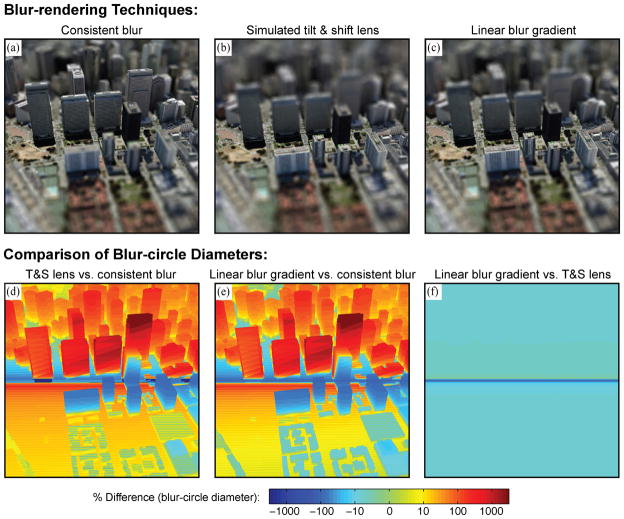Fig. 5.
Comparison of blur patterns produced by three rendering techniques: consistent blur (a), simulated tilt-and-shift lens (b), and linear blur gradient (c). The settings in (b) and (c) were chosen to equate the maximum blur-circle diameters with those in (a). The percent differences in blur-circle diameters between the images are plotted in (d), (e), and (f). Panels (d) and (e) show that the simulated tilt-and-shift lens and linear blur gradient do not closely approximate consistent blur rendering. The large differences are due to the buildings, which protrude from the ground plane. Panel (f) shows that the linear blur gradient provides essentially the same blur pattern as a simulated tilt-and-shift lens. Most of the differences in (f) are less than 7%; the only exceptions are in the band near the center, where the blur diameters are less than one pixel and not detectable in the final images.

